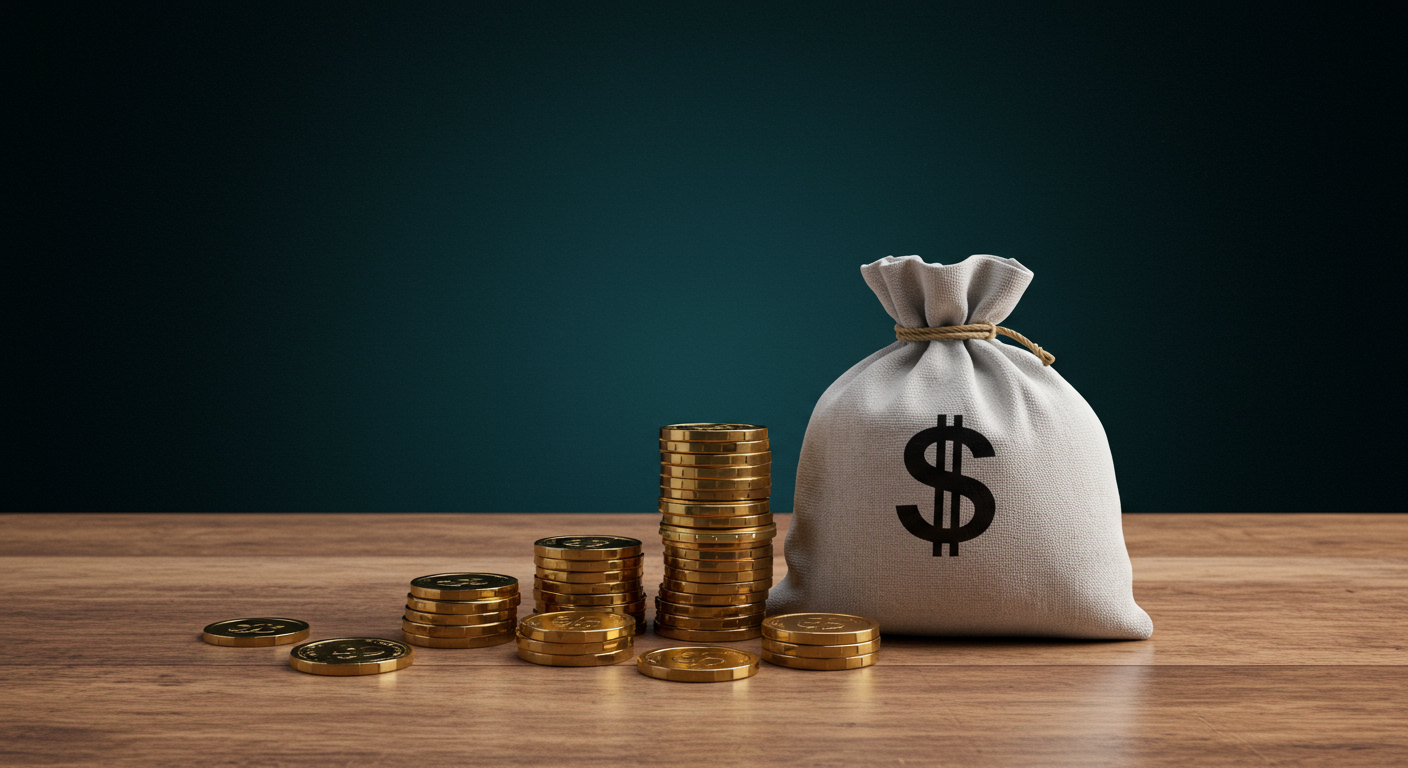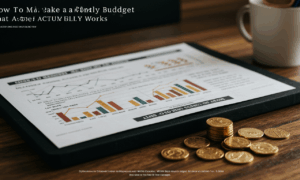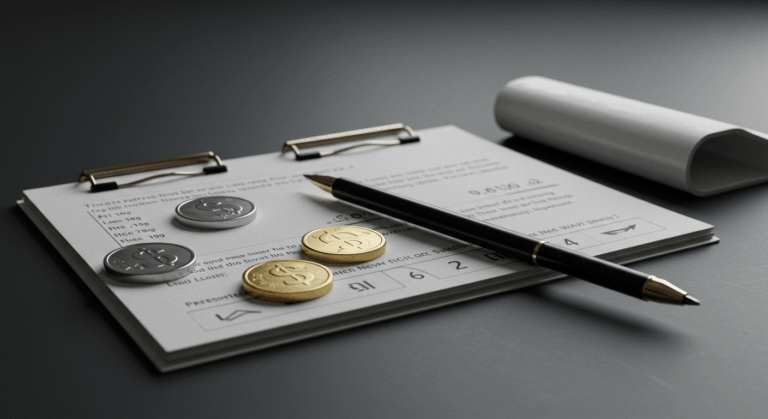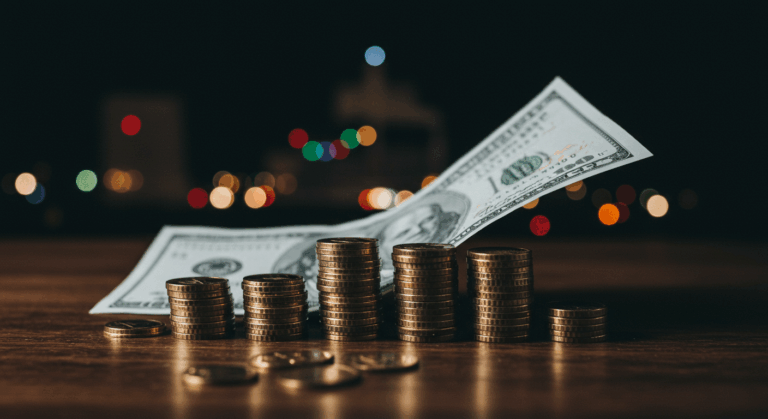An emergency fund is the cornerstone of a solid financial plan, yet it is an element that many people overlook until it is too late. Imagine facing a sudden job loss, a critical medical bill, or an urgent and costly home repair without any financial cushion. The stress can be overwhelming, often leading to high-interest debt that derails your long-term goals. This article provides a clear, actionable guide to building your financial safety net. Forget the complexity and anxiety; we will break down the process into four simple, manageable steps to help you achieve genuine financial security and peace of mind.
Building this financial buffer is not about being pessimistic; it is about being prepared. It is the single most effective barrier between you and financial disaster. By following this guide, you will learn exactly how much to save, where to keep your money for both safety and accessibility, and how to build your fund systematically without disrupting your life. Let us begin building your path to financial resilience.
What Exactly is an Emergency Fund and Why is it Non-Negotiable?
At its core, an emergency fund is a pool of money set aside exclusively for unforeseen and urgent expenses. Think of it as your personal financial firefighter, ready to extinguish unexpected financial flames before they burn down your entire financial house. It is not a vacation fund, a down payment for a car, or a source for impulsive shopping. Its purpose is strictly to cover emergencies that would otherwise force you to take on debt or liquidate long-term assets.
The primary reason you need one is to protect your financial stability. Without this safety net, a single unexpected event can have a domino effect. For example, if your car, which you rely on for work, breaks down, you might be forced to put the repair bill on a high-interest credit card. This creates a new monthly payment that strains your budget, reduces your ability to save, and ultimately costs you more in interest. An emergency fund allows you to handle such a situation with cash, avoiding debt and keeping your financial goals, like your investment portfolio, intact and growing.
True emergencies typically fall into three categories:
- Loss of Income: Sudden job loss or a significant reduction in your work hours.
- Medical or Dental Crises: Unexpected health issues that require immediate and costly treatment not fully covered by insurance.
- Urgent Repairs: A leaking roof, a failed furnace in winter, or essential car repairs.
Having this fund provides more than just money; it provides options and reduces stress during already difficult times. It gives you the breathing room to make clear-headed decisions instead of desperate ones.

Step 1: Calculate Your Target Amount
The first step in building your safety net is knowing how large it needs to be. The standard financial advice is to save 3 to 6 months of essential living expenses. This range allows for flexibility based on your personal circumstances. For example, if you have a very stable job and multiple sources of income, 3 months might suffice. However, if you are a freelancer, a single-income household, or work in a volatile industry, aiming for 6 months or even more provides a much stronger buffer.
To calculate your target, you must first identify your essential expenses. This is not your total monthly spending. It is the bare-bones amount you need to survive. Create a list and sum up the monthly costs for:
- Housing: Your rent or mortgage payment.
- Utilities: Electricity, water, gas, and essential internet service.
- Food: A realistic grocery budget.
- Transportation: Fuel, public transit passes, or car payments.
- Insurance: Health, auto, and home insurance premiums.
- Minimum Debt Payments: The minimum required payments on any existing loans or credit cards.
For instance, if your essential monthly expenses total $2,500, your 3-month goal would be $7,500, and your 6-month goal would be $15,000. Do not let this number intimidate you. The goal is not to have it all tomorrow. The goal is to have a clear target to work towards. A great initial milestone is to save your first $1,000. This smaller, more achievable goal can provide a huge psychological boost and cover many common minor emergencies.
Step 2: Choose the Right Place for Your Fund
Where you keep your emergency fund is just as important as having one. The two most critical characteristics of an emergency fund account are liquidity and safety. Liquidity means you can access the money quickly and easily when you need it, without penalties. Safety means the money will not lose value. This is why you should never invest your emergency fund in the stock market. While investing is crucial for long-term wealth building, the market is too volatile for short-term emergency needs. A market downturn could erase a significant portion of your fund right when you need it most.
Similarly, a standard checking account is not ideal because the money is too easily spent on non-emergencies. The best practice is to keep the fund in a separate account dedicated solely to this purpose. The top choice for most people is a High-Yield Savings Account (HYSA). These accounts, typically offered by online banks, offer significantly higher interest rates than traditional brick-and-mortar savings accounts. This allows your money to grow slightly and better keep pace with inflation while remaining completely safe (look for FDIC or equivalent insurance) and accessible.
Another viable option is a Money Market Account (MMA), which often offers check-writing privileges and debit cards, providing another layer of accessibility. The key is to find an account that is separate, safe, liquid, and ideally, earns some interest. Segregating your fund physically and mentally helps enforce the discipline needed to only use it for its intended purpose.
Step 3: Automate Your Savings
The most effective way to build your emergency fund consistently is to make the process automatic. Relying on willpower or remembering to transfer money each month is a flawed strategy. Life gets busy, and other expenses always seem to pop up. By automating your savings, you adopt the powerful principle of paying yourself first. This means your savings contribution is treated as a non-negotiable bill, just like your rent or utility payment.
Set up an automatic, recurring transfer from your primary checking account to your dedicated emergency fund savings account. Schedule this transfer to occur right after you receive your paycheck. This way, the money is moved before you even have a chance to spend it. Even a small amount can make a huge difference over time due to consistency. If your budget is tight, start with just $25 or $50 per paycheck. The important part is to start and build the habit. You can, and should, increase the amount as your income grows or you find ways to cut other expenses. For more ideas on how to optimize your budget, explore our guides on savings.
To accelerate your fund’s growth, commit to directing any unexpected income, or windfalls, directly into it. This includes tax refunds, work bonuses, rebates, or even cash gifts. Instead of viewing this as “fun money,” see it as a golden opportunity to fast-track your journey to financial security. Combining small, automatic contributions with larger, occasional deposits will help you reach your 3-to-6-month goal much faster than you think.
Step 4: Protect and Replenish Your Fund
Once you have built your emergency fund, or while you are in the process, it is critical to establish firm rules for its use. This final step is about discipline and maintenance. Before touching the money, ask yourself three questions: Is it unexpected? Is it necessary? Is it urgent? If the answer to all three is yes, it is likely a legitimate emergency. A last-minute flight for a vacation is not an emergency; a last-minute flight for a family medical crisis is.
When an emergency does occur and you need to use the funds, do so without guilt. This is exactly what the money is for. It has served its purpose by protecting you from financial harm. However, your work is not done. As soon as the crisis is managed, your top financial priority must become replenishing what you used. Pause contributions to other financial goals, like retirement or investment accounts, if necessary. Redirect that money to rebuild your safety net as quickly as possible. Your financial foundation must be secure before you can continue building upon it.
Finally, schedule an annual review of your emergency fund. Life changes, and your fund should adapt. If you have gotten a raise, bought a home, or had a child, your essential monthly expenses have likely increased. Recalculate your 3-to-6-month target and adjust your savings plan accordingly to ensure your safety net remains adequate for your current life circumstances.
Conclusion: Your Shield Against Uncertainty
Building an emergency fund is one of the most empowering actions you can take for your financial health. It is a tangible shield that protects you and your family from the inevitable uncertainties of life. By following these four steps—Calculate your target, Choose the right account, Automate your contributions, and Protect your fund—you transform a daunting task into a simple, achievable plan. The peace of mind that comes from knowing you can handle a financial shock without derailing your future is invaluable.
Do not wait for a crisis to force your hand. Start today. Open that separate savings account. Set up your first automatic transfer, no matter how small. Every dollar you set aside is a step toward greater stability, control, and freedom. Your future self will thank you.
Frequently Asked Questions (FAQ)
How much should I have in my emergency fund if my income is unstable or I am self-employed?
If your income is irregular, such as for freelancers, commission-based workers, or business owners, it is wise to aim for the higher end of the savings range. A fund covering 6 to 9 months of essential expenses is a more appropriate target. This larger cushion provides a longer runway to navigate slow business periods or find new work without added financial stress. Some may even opt for a full year of expenses for maximum security.
I have high-interest debt. Should I pay it off before starting my emergency fund?
This is a common dilemma, and the best approach is often a balanced one. While paying off high-interest debt, like credit card balances, is critical, having zero savings leaves you vulnerable. A widely recommended strategy is to first build a small starter emergency fund of around $1,000 to $2,000. This small fund can cover minor emergencies and prevent you from taking on more debt. Once that starter fund is in place, you can aggressively attack your high-interest debt. After the debt is cleared, you can then focus on building your emergency fund to the full 3-to-6-month level.
Can I use a line of credit or credit card as my emergency fund?
Using credit as your primary emergency plan is a risky strategy. While a line of credit can be a useful tool, it is still debt that you must repay with interest. Furthermore, a lender can reduce or close your line of credit at any time, especially during a broad economic downturn, which is often when you might need it most. A true emergency fund is your own money; it does not rely on a lender’s approval, does not accrue interest, and provides true financial independence during a crisis.





